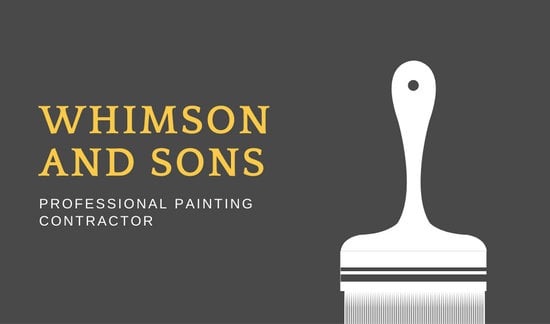Crucial Seasonal Aspects Of Commercial Exterior Painting: What You Ought To Understand
Crucial Seasonal Aspects Of Commercial Exterior Painting: What You Ought To Understand
Blog Article
Material By-McLamb Skafte
When you're planning an industrial outside painting job, seasonal factors can make or damage your results. You'll wish to consider how temperature and moisture impact paint application and drying times. Selecting the appropriate season can guarantee your paint sticks effectively and lasts much longer. However which seasons are truly the best for this sort of job? Let's discover the crucial elements that can affect your project's success.
The Impact of Temperature Level on Paint Application
When you're planning a commercial outside paint project, the temperature can considerably affect just how well the paint sticks and dries out.
Ideally, you wish to paint when temperature levels vary between 50 ° F and 85 ° F. If it's too cold, the paint might not treat effectively, resulting in problems like peeling off or cracking.
On the other hand, if it's too hot, the paint can dry out too promptly, preventing proper bond and causing an unequal surface.
You must also take into consideration the time of day; early morning or late afternoon uses cooler temperature levels, which can be much more positive.
Constantly check the producer's recommendations for the specific paint you're making use of, as they typically offer support on the excellent temperature level range for optimal results.
Humidity and Its Result on Drying Times
Temperature isn't the only environmental variable that affects your business external paint task; moisture plays a considerable function too. High moisture degrees can slow down drying times substantially, influencing the total high quality of your paint work.
When the air is saturated with dampness, the paint takes longer to cure, which can bring about problems like bad adhesion and a higher threat of mildew development. If you're repainting on a specifically humid day, be prepared for extended delay times in between layers.
just click the following page to keep an eye on neighborhood climate condition and plan appropriately. Preferably, aim for moisture degrees in between 40% and 70% for ideal drying.
Maintaining click the up coming web site consider mind guarantees your job remains on track and supplies a long-term surface.
Best Seasons for Commercial Outside Painting Projects
What's the best time of year for your industrial exterior painting projects?
Spring and very early fall are usually your best choices. During these seasons, temperatures are mild, and moisture levels are often lower, developing excellent problems for paint application and drying.
Avoid summer's intense heat, which can cause paint to completely dry also rapidly, resulting in poor adhesion and coating. Similarly, winter season's chilly temperatures can prevent proper drying out and curing, risking the longevity of your paint work.
Go for browse around this web-site with temperature levels in between 50 ° F and 85 ° F for optimal outcomes. Remember to inspect the neighborhood weather report for rainfall, as wet conditions can spoil your job.
Preparation around these aspects ensures your paint project runs smoothly and lasts longer.
Final thought
In conclusion, intending your industrial external painting jobs around seasonal factors to consider can make a considerable difference in the outcome. By scheduling work throughout the ideal temperature levels and moisture degrees, you'll make certain far better attachment and drying out times. Keep in mind to keep an eye on local weather report and select the right time of year-- spring and early autumn are your best choices. Taking these actions will aid you accomplish a long lasting and expert coating that lasts.
